Some 422 operators have commercially launched Long Term Evolution 4G networks in 143 countries, according to data released this week by GSA (Global mobile Suppliers Association).
Also, 106 operators commercially launched LTE service in the past year, bringing the total of LTE operators to 677 across 181 countries.
LTE-Advanced deployments have taken hold in all markets around the world, as well.
More than 30 percent of operators are investing in LTE-Advanced system deployments while
88 operators have commercially launched LTE-Advanced service in 45 countries.
Some 15 LTE-Advanced networks support Category 4 devices (above 100 Mbps up to 150 Mbps peak downlink speed) while 73 networks support Category 6 devices (above 150 Mbps up to 300 Mbps).
Several operators are trialling LTE-Advanced technology capable of supporting Category 9 (above 300 Mbps up to 450 Mbps) devices and beyond.
The most widely used spectrum for LTE network deployments continues to be 1800 MHz (3GPP band 3).
LTE1800 is now used in 187 commercially launched networks in 89 countries representing over 44 percent of LTE network deployments.
The next most popular contiguous band for LTE systems is 2.6 GHz (band 7) being deployed in 100 networks. 800 MHz (band 20) is by far the next most popular spectrum choice, used by 91 operators.
While most operators (90 percent) deployed LTE networks in paired spectrum using the FDD mode, the LTE TDD mode (TD-LTE) for operators with unpaired spectrum continues to develop in all regions.
Currently 59 operators have commercially launched LTE service using the TDD mode in 35 countries. Band 40 (2.3 GHz) is the most widely deployed spectrum. 17 operators have deployed both FDD and TDD modes in their networks. Converged FDD and TDD LTE networks is gaining traction amongst many operators.



